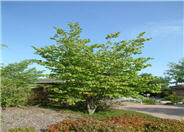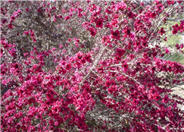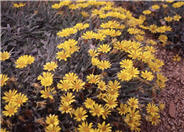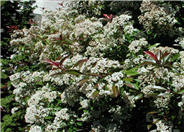
Common name:Western Redbud
Botanical name:Cercis occidentalis
This deciduous shrub or small tree reaches 15' tall and 10' wide. Beautiful magenta flowers appear in spring, before the leaves appear. Foliage is apple green , turning yellow to red in the fall. Seed pods dangle on this tree in winter. Western Redbud prefers full sun but will appreciate afternoon shade in desert areas. It needs well draining soil. It is drought tolerant once it's established. It attracts hummingbirds and butterflies. A tree of varying interest all year round!

Common name:Ruby Glow New Zealand Tea Tree
Botanical name:Leptospermum scoparium 'Ruby Glow'
New Zealand Tea Tree has small, needle-like green leaves with showy, .5" rose-like flowers in winter and spring. These shrubs can be thinned to enhance their attractive branch structure and flaking bark. They need very little water once established. 'Ruby Glow' is compact, upright and grows 6'-8' tall by 4'-5' wide. It has dark foliage with deep red blooms; it works well as a red accent in the garden.

Common name:Trailing Gazania, Treasure Flower
Botanical name:Gazania rigens leucolaena
Gazania rigens is a clumping or spreading plant grown for colorful daisies over long bloom season. Tolerates seacoast conditions. Grows well in most soil conditions, and needs only occasional water once established (2-3 times per month).

Common name:Red-Leaf or Fraser Photinia
Botanical name:Photinia X fraseri
The Photina X fraseri is an evergreen, medium-sized shrub, growing 10'-15' tall, with new foliage that is a glistening, copper red color. It is excellent as a hedge, screen, or accent plant. It should be grown under conditions of sun. White flowers cover the shrub in spring.
| Designer: | Arbor and Swing |
Photographer: GardenSoft |
Soils and Compost:
Physical weed control, including mulching, or hand removal protects the watershed from harmful chemicals.
Water Saving Tip:
Group plants in your garden according to their water needs (hydrozone).
Integrated Pest Management:
Remove irrigation water and fertilizer from areas where you don't want weeds to grow.

